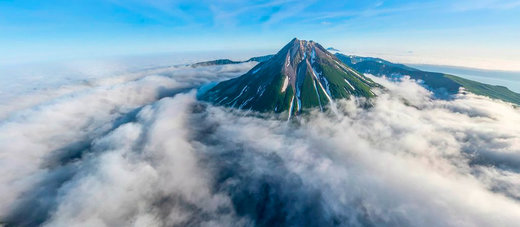Omanawa resident and EOL CEO Terry Coles heard what sounded like two large explosions last Saturday night. He wondered at the time if they were sonic booms from a meteor.
His suspicions were confirmed on Tuesday when he set up a camera on the balcony to take continuous exposures for a timelapse video he's working on about the night sky over the Kaimais.
"I left the camera running as I needed several thousand consecutive images and went inside where it was warm," says Terry.
"Just after 11pm I heard three more explosions in quick succession, louder this time as if they were close by."
Suspecting he had missed something special he sifted through hundreds of images from Tuesday night and found something in just one frame.
"Two beautiful meteors one behind the other with an amazing green tail. The timestamp on the image coincided with when I had heard the booms."
"A stroke of luck that I had the camera pointing at the right bit of sky, even if it was only a wide angle lens so not a close up view unfortunately."
The colour is caused by the super-heating of magnesium atoms.
"They glow when they get hot and come into contact with oxygen atoms. A bit like auroras do," says Terry.
It could be rock or metal. The tail could be dust fragments off the head of the meteor or smoke. He's got images of that as well. He made a little slow-mo time lapse of the next 22 frames which show a smoke trail twisting and twirling in the wind.
"It makes it look quite close," says Terry. "I wouldn't imagine the camera would have picked up the smoke trail if they were too far away. It's night, pitch black, and smoke doesn't glow.
"The lens was only a wide angle lens so they were a lot closer than they look in the photo. But without actually standing out there and seeing them it would be pretty hard to tell what size they were, and how far away they were."
The camera was pointing south.
Reputable internet sites say a meteor has to be larger than a football to produce a sonic boom, says Terry.
Comment: "Reputable internet sites"?! Reputable according to whom?
The larger the object the louder the boom. Larger objects make two distinct booms - two ahead, and one behind that is usually not heard from the ground. He heard three distinct booms in rapid succession.
Comment: That's an assumption born of basic mechanics, but meteors are way more complex than that.
"If you zoom in on the photo you can see the head of the meteor is split in two, that's probably when the sonic boom happened," says Terry. "There's a lot of theory on the internet about sonic booms and when it happens. It probably happened quite a while before, but took a while to get to us.
"It could have happened when it was quite elevated. It's hard to know really without actually seeing it, just looking at a photo."
The camera was facing south with an elevation of 45-50 degrees above the horizon. Each image is a ten second exposure.
"It's hard to know in that ten seconds when it was passing the frame. It could have been the last second or it could have been half, at five seconds which would have made the tail look longer than it was."
It may have struck earth south of Omanawa on the Kaimai range, or even in the Waikato.
Comment: Meteors rarely 'strike Earth'. When you hear the sonic boom, that's it - the object exploded in the atmosphere and is no more (though some meteorites may rain down somewhere tens or hundreds of miles away).
"Someone might find themselves a million dollar space rock if they look hard enough."




Reader Comments
to our Newsletter